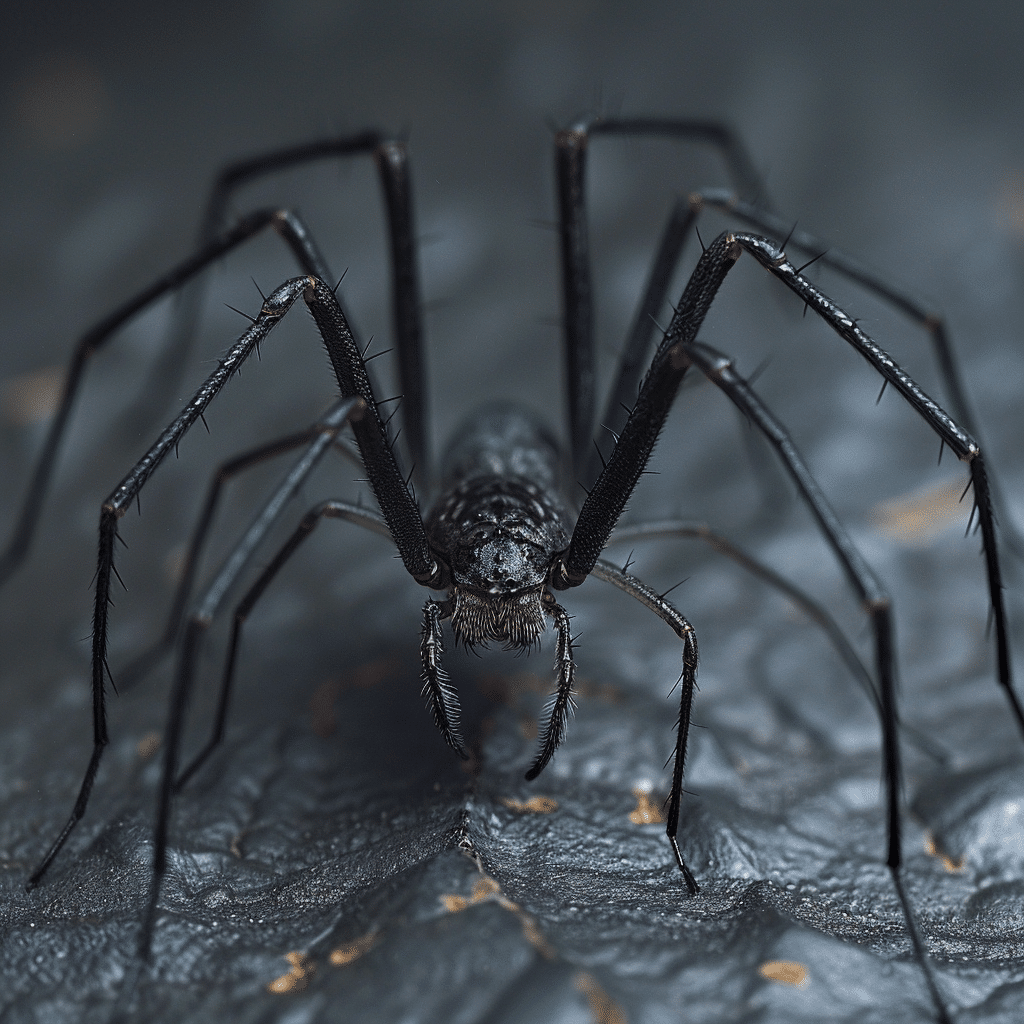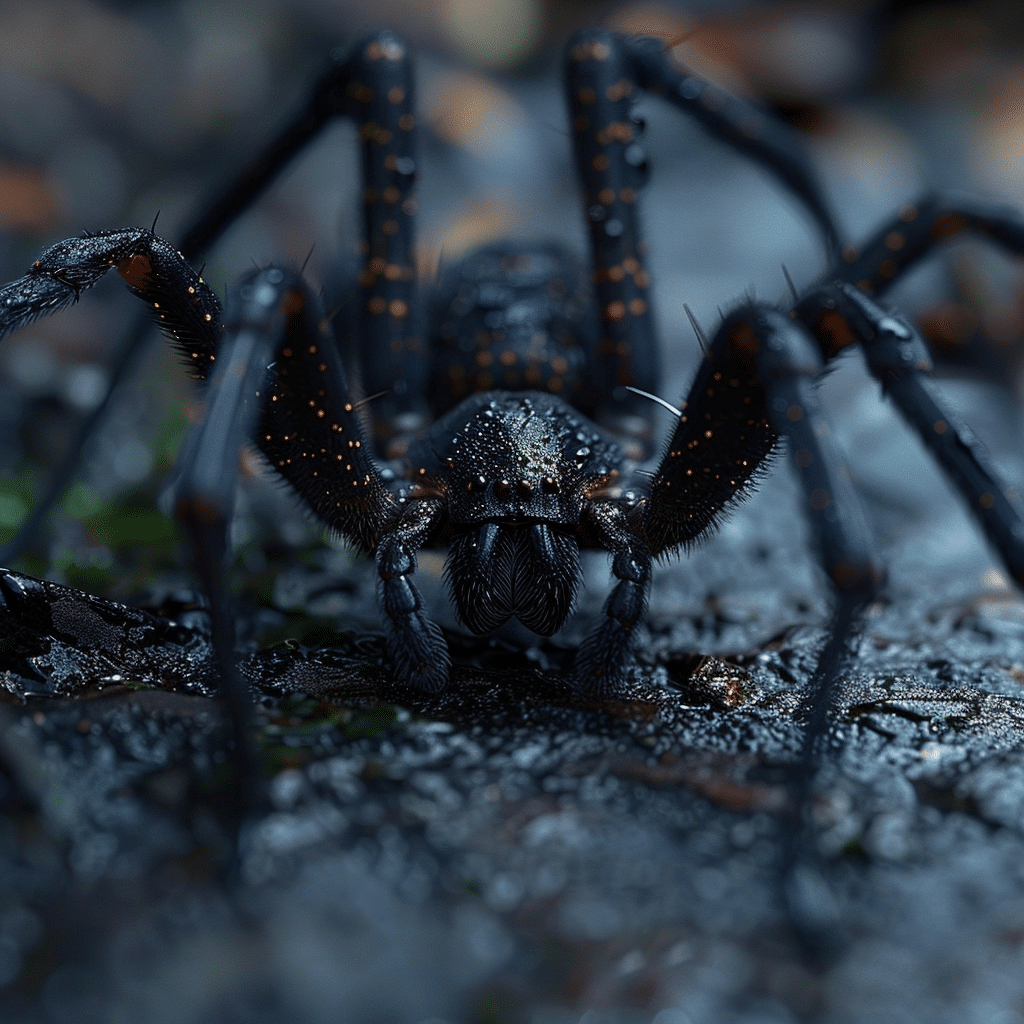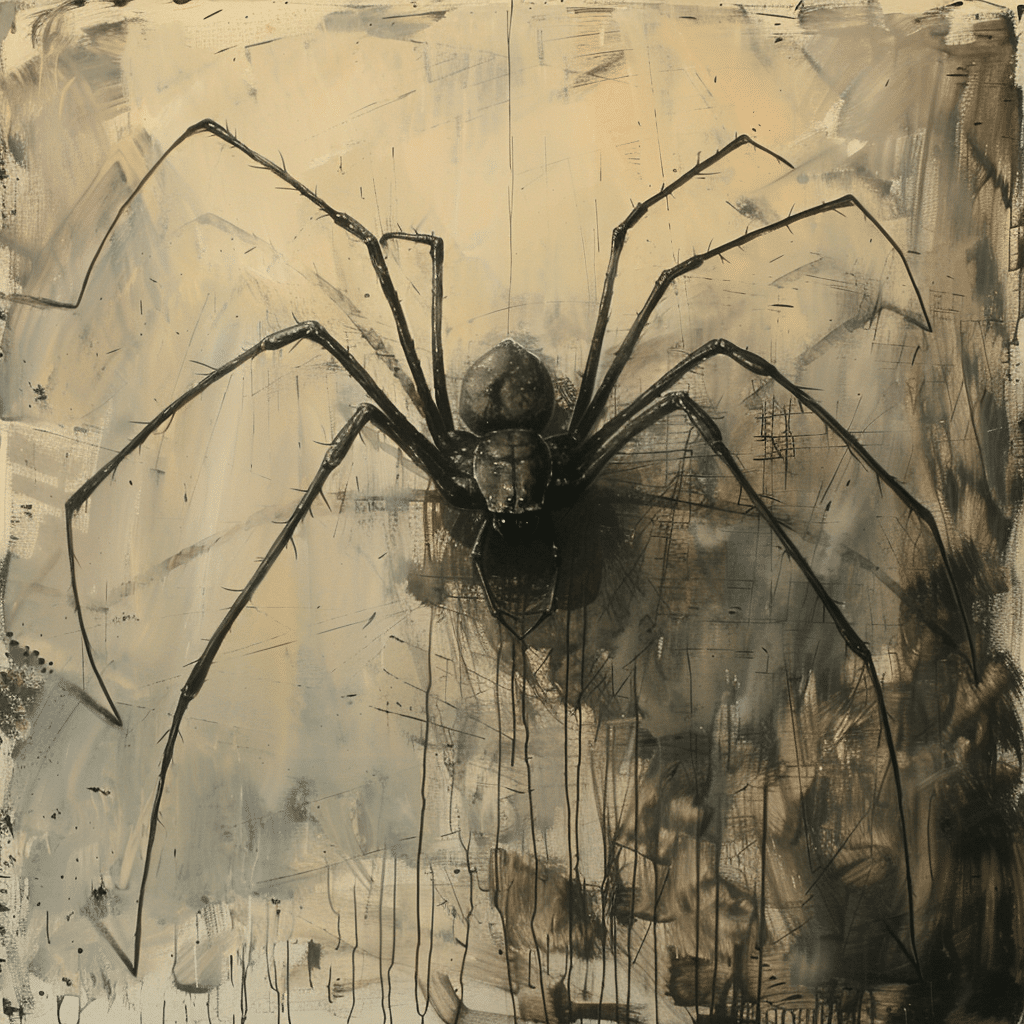Whip Spider Biology: A Glimpse Into Their Unique Anatomy
Understanding the Whip Spider Phenomenon: An Overview
You might have seen them in a creepy-crawly nightmare or perhaps marching across the screen in a nature documentary. Yes, I’m talking about the whip spider, a beast straight out of a science fiction tale. The whip spider, also known by the less-catchy term amblypygid, looks like the lovechild of a crab and some H.P. Lovecraftian horror. With its spindly legs and elongate, worm-like body, the whip spider skitters across the floor of our planet’s more steamy locales.
These fascinating creatures are a goldmine for both arachnologists and lovers of the bizarre alike. Lacking venomous fangs or web-spinning abilities, these critters are like the MacGyvers of the arachnid world—relying on their ingenuity and unique physical attributes to survive. Inhabiting the warm, humid regions like the nooks of Central Africa to the caves of Australia, they’ve adapted impressively to a wide range of environments. And get this: despite their fearsome appearance, whip spiders are about as harmful to humans as a caterpillar from “A Bug’s Life”. They’re non-venomous; their only defense when threatened is to bolt or, in a worst-case scenario, spray a vinegar-like substance. But more on that later. Let’s delve into five quirks that make these creatures endlessly fascinating.
Unveiling the #1 Whip Spider Enigma: Their Mysterious Mating Rituals
First off, they might not win any beauty contests, but whip spiders take courtship to a whole new level of complexity. Their mating rituals are the things of legend, a mesmerizing dance of antenniform legs and sensual caresses, proving that in the animal kingdom, foreplay is far from just a human indulgence.
Recent studies have peeled back the curtain on these intimate affairs. Through painstaking observation, researchers have documented these arachnids as they engage in elaborate pre-mating dances, which seem to play a vital role in ensuring successful copulation. These rituals are made even more captivating due to the whip spiders’ heightened sensory perception, allowing them to communicate with their potential partners in a way that’s beyond our human capabilities.

#2: Whip Spider Navigation – Sensing Vibrations Without Eyes
Despite what their name suggests, whip spiders do not rely on sight to get around. In fact, many varieties boast pretty lousy vision. But what these critters lack in eyesight, they make up for with an acute ability to sense vibrations. It’s like they’ve got their own built-in seismograph, permitting them to deftly maneuver in the dark.
Think of tailor-made Nike track Spikes gripping the earth with every stride—whip spiders can detect the tiniest tremors, which they use to navigate their way through their dimly lit worlds or to zero in on a meal. Recently, scientists have thrown a spotlight on their ability to detect the aerial vibrations caused by their prey—a skill that allows them to pursue targets with laser-guided precision.
#3: The Surprising Social Structure of Whip Spiders
Conversation starter at your next trivia night: These creepy critters actually enjoy a bit of company now and then. Yes, while we’ve been taught that arachnids are the quintessential loners, whip spiders buck the trend with demonstrable social structures.
Recent behavioral studies suggest that whip spiders show a surprising level of social tolerance, whether it’s mothers caring tenderly for their wee spiderlings or juvenile batches huddling together for safety. Observations report frequent non-aggressive interactions, debunking the myth that all spiders are solitary creatures hell-bent on cannibalism. This kind of social behavior is a rare glimpse into the more tender side of the arachnid world, kind of like uncovering the cast Of All quiet on The Western front having a group hug behind the scenes.
#4: Whip Spider Habitat Mastery: Secrets of Adaptability
From the arid sands of semi-desert regions to the drenched floors of tropical rainforests, whip spiders are found pulling off the ultimate survival acts in some pretty extreme abodes. Their adaptability is nothing short of miraculous—some could say they’re the Houdinis of the arachnid realm.
How do they do it? Well, the secret lies in their survival toolkit. Moisture-retentive burrows and precise nocturnal hunting allow them to thrive in environments as punishing as the Sahara. Meanwhile, whip spiders residing in more humid climates are like tiny landlords, commandeering every crevice, cave, and overhang they can scurry into.
#5: Predatory Prowess and Defense Strategies of Whip Spiders
And lastly, despite their goofy name, whip spiders are no laughing matter on the hunting grounds. They are the ninjas of the invertebrate world: silent, swift, and deadly. Ambush is their game, and they are masters of it, using their long legs to ensnare unwary prey like crickets, cockroaches, and even small vertebrates with ninja-like precision.
However, they’re not just about offense. When the tables turn, whip spiders have a few tricks up their sleeves. As mentioned earlier, they can discharge a noxious spray that smells strongly of vinegar when provoked. This chemical concoction can deter many would-be predators, allowing these arachnids a chance to beat a hasty retreat.

Conclusion: Embracing the Mysteries of Whip Spiders for Future Research
The more we dig into the world of whip spiders, the clearer it becomes that these creatures are not just the stuff of nightmares. They play an indispensable role in the ecosystems where they reside, acting as both predator and prey.
Their unique biology and behavior patterns continue to unravel with each study, leading researchers down new and exciting paths of discovery. There’s a world of potential for future exploration into the secrets of these extraordinary animals. By embracing their mysteries and deepening our understanding, we not only enrich our ecological knowledge but also nurture a broader respect for the intricate tapestries of life woven into our natural world.
So the next time you catch a glimpse of those lengthy limbs skittering in the shadows, instead of shuddering in disgust, pause and offer a nod of respect to these incredible whip spiders. They are much more than a creepy apparition; they are an example of evolution’s constant innovation and a reminder of nature’s unfathomable creativity.
Unraveling the Mysteries of the Whip Spider
Gather ’round, folks, because we’re about to dig into the wild world of the whip spider. These creatures might not be Hollywood famous like some members of the Chappie cast. Still, they deserve the spotlight for their unique qualities and, frankly, their ability to make even the bravest soul a tad uneasy. Let’s jump into some trivia that will stretch your imagination as much as a whip spider’s long, antenna-like legs!
Spiders, But Not Really
You might hear ‘whip spider,’ and your mind instantly thinks, “Ah, creepy crawler equals spider.” Hold your horses, though! Whip spiders, my dear Watsons of the Web, are not true spiders at all. Yep, you heard it here first. They belong to the order Amblypygi, which is sort of like being in a specific club – think of it as elite as Suzanne Malveaux is in the realm of journalism – and this means they’re more like distant cousins twice removed on their mother’s side to your garden-variety arachnid.
Who Needs Webs When You’ve Got Whips?
When you think about spider accessories, nike Spikes might not be the first thing that comes to mind, but if spiders had a choice in footwear, they’d probably envy the precision of a whip spider’s appendages. These guys use their long, whip-like front limbs to feel around, kind of like how we might use a curling wand to skillfully twist our hair. Except, instead of seeking perfect curls, they’re on the prowl for their next meal or navigating their shadowy environments.
The Name Game
Alright, let’s chat names. You don’t call a Presa Canario a Chihuahua for clear reasons, right? The same goes for our friend the whip spider. Their name is no accident—it’s a direct nod to those lengthy ‘whips’ they tote around, also known as pedipalps. While we’re on the subject of names, though, fun fact: whip spiders are sometimes called “tailless scorpions. But don’t let that moniker fool you; they’re more bark than bite, seeing as they don’t have venom or a stinger to pack a punch.
The Great Pretenders
Oh, the drama! Whip spiders could give the caterpillar a Bugs life a run for its money when it comes to putting on a show. They’re the masters of mimicry, often appearing larger and scarier to frighten off predators or rivals. Picture it: they’re there in the underbrush, doing their best impression of a creature you wouldn’t want to mess with, even if you had a big stick. It’s all part of their survival script, and honestly, they deserve a standing ovation.
Social Butterflies? Not Quite
Don’t expect a whip spider to be the life of the party. These critters are generally loners, shying away from the social butterfly status. It’s not their jam to frolic with others like some kind of socialite at a gala. They’re more like introverts at heart, enjoying the solace of their nooks and crannies, only venturing out to hunt or find love. But when they do mingle, it’s rather a delicate affair, with males performing a courtship dance. Sweet, isn’t it?
So there you have it, a small peek into the secrets of the whip spider. These creatures might not be everyone’s cup of tea, but their nuances and quirks are definitely worthy of interest and respect. Who knows, the next time you encounter a whip spider or its kin, you might just tip your hat in acknowledgment to these fascinating, leggy wonders.

Can whip spiders hurt you?
– Can whip spiders hurt you?
Oh, whip scorpions might give you the heebie-jeebies, but they’re all bark and no bite! Despite their menacing appearance, these critters won’t sink their teeth into you—’cause they can’t! Sure, they can get crabby and spray a stinky vinegar-like concoction if you ruffle their feathers, which, by the way, stings and could irritate your skin. But otherwise, if you steer clear, they’re pretty chill.
Can you have a whip spider as a pet?
– Can you have a whip spider as a pet?
Absolutely! If you fancy a pet that’s off the beaten track, consider the whip spider. Pet enthusiasts have warmed up to several species like Damon diadema and Phrynus marginemaculatus, which, by the way, don’t demand cuddles. Just remember, they need their space—think a snug enclosure with humidity on the dot. It’s like having your own personal little creep-crawler show at home!
Are whip spiders in North America?
– Are whip spiders in North America?
Yep, you bet! These creepy crawlies have set up camp in the warmer, tropical and subtropical neck of the woods of North and South America. So, if you’re a bit of a night owl, you might catch them scuttling around when the sun takes a hike.
Are whip spiders from Australia?
– Are whip spiders from Australia?
You’re on the money! Australia, being the land of ‘nope,’ sure has its own version of a whip spider—the Ariamnes colubrinus to be exact. These fellas lounge around in places like Victoria, New South Wales, and Queensland, not bothering a soul.
Why should you not squish a spider?
– Why should you not squish a spider?
Whoa, easy there, cowboy! Squishing a spider is a no-win deal—for you and the spider. They’re the good guys, rounding up pests in your home on the DL. Plus, if they’re venomous, you could be inviting trouble by squishing them. Makes sense to show some mercy, right? Live and let live!
What is the most painful spider?
– What is the most painful spider?
Yikes, that title goes to the notorious Brazilian wandering spider—cue the shudders! They pack a punch with their bite, which, I tell ya, is not a walk in the park. You’d want to steer clear of these not-so-friendly critters.
What states do whip spiders live?
– What states do whip spiders live?
If you’re in the U.S. and itching to see a whip spider, aim for a trip to the warmer states, preferably with a tropical or subtropical vibe. Otherwise, these shy nocturnal vagabonds tend to be quite the globe-trotters, but specifics, on a state-by-state basis, are pretty hush-hush.
What is the lifespan of a whip spider?
– What is the lifespan of a whip spider?
Whip spiders are in it for the long haul, with a dash of good care, they can kick it for about 5 to 10 years. Not too shabby for a pet, huh?
Can a pet spider recognize you?
– Can a pet spider recognize you?
Don’t hold your breath for an eight-legged greeting! Spiders have brains the size of a pinhead, so playing favorites with humans ain’t their style. They’re survivors, not suck-ups. But, hey, they’ll remember where their chow comes from, so you’re not entirely off their radar.
What state has zero spiders?
– What state has zero spiders?
Dream on! There isn’t a no-spider paradise in the States—or anywhere on the planet, for that matter. These crafty critters are everywhere; it’s a package deal with nature.
What eats whip spiders?
– What eats whip spiders?
In the game of eat or be eaten, whip spiders find themselves on the snack menu for bats and big ol’ lizards. Even the fastest dance moves won’t always save them from becoming winged or scaly critters’ munchies.
How big is the biggest whip spider?
– How big is the biggest whip spider?
The award for the most ginormous whip spider goes to the species Damon diadema. These hefty critters can flaunt a body that’s up to a whopping 28 mm—that’s, well, about the size of a small matchbox. Pretty impressive for a spindly spooky dude, eh?
Why is it called a whip spider?
– Why is it called a whip spider?
And here’s the million-dollar question! They get their name from their elongate, worm-like body shape that could remind you of Indiana Jones’ favorite accessory—a whip! Plus, with those long skinny legs, they look like they could crack one, don’t they?
Why do whip spiders have hands?
– Why do whip spiders have hands?
Whip spiders have these nifty appendages called pedipalps that seem a bit like hands. But hey, don’t expect a high-five, these bad boys are for grabbing a tasty meal or serenading a potential mate. Talk about having handy assets!
What is the whip spider in Harry Potter?
– What is the whip spider in Harry Potter?
Okay, Potterheads, raise your wands for this one! What you’ve seen skittering about in ‘Harry Potter and the Goblet of Fire’ is a tailless whip scorpion, which is also known as a whip spider. Sure, it’s got a Hollywood makeover, but it’s the same creature – totally harmless but all kinds of wicked in the Forbidden Forest scene!




















